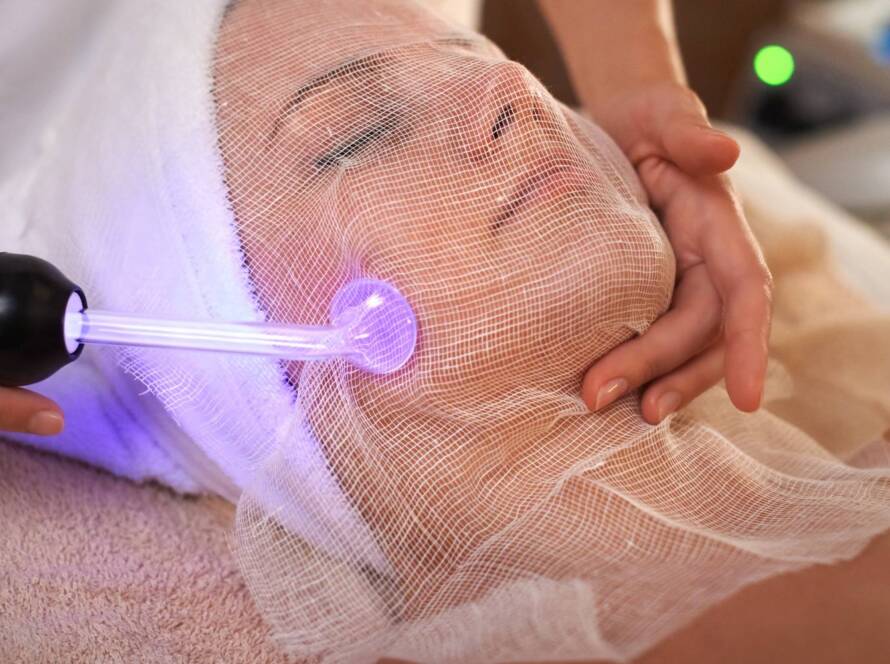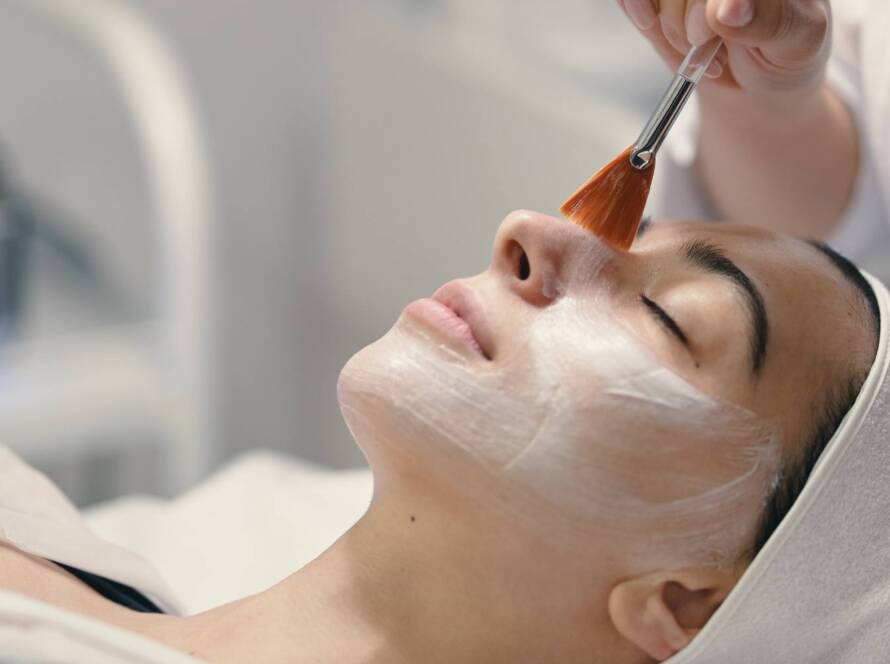Table of Contents
How often should you exfoliate your skin? If you’ve been asking yourself this exact question, you’re already on the path toward a smoother, brighter, and healthier complexion. Exfoliation is a key step in any skincare routine because it sheds dead skin cells, unclogs pores, and boosts your natural glow. However, finding the right balance can feel tricky. Exfoliate too often, and you risk irritation and dryness; exfoliate too little, and dullness can creep in. By the end of this guide, you’ll know exactly how often to exfoliate based on your skin type, the techniques that suit you best, and the signs that let you know you’re on the right track.
Why Exfoliation Matters
Exfoliation is all about renewal. Your skin is constantly shedding cells, but sometimes those old cells hang around longer than they should. This can cause congestion on the surface, leading to issues such as blackheads, breakouts, and rough texture. By lifting those dead cells away, you allow fresh, youthful cells to emerge, which can improve your overall tone and texture.
Beyond helping you look vibrant, exfoliation supports better absorption of serums and moisturizers. When you remove the barrier of dead cells, your treatments can sink deeper, delivering the benefits where your skin needs them most. It’s a small step with a big impact, and done right, it can transform the way your complexion looks and feels.
Different Exfoliation Methods
There are two main types of exfoliation you’ll encounter: physical and chemical. Both can fit seamlessly into your routine, but each has its own personality, pros, and potential pitfalls.
- Physical (Manual) Exfoliation
You’ll come across scrubs, facial brushes, and exfoliating mitts that buff away dead skin. You feel it working in real time, which can be satisfying. However, it’s easy to go overboard and inadvertently cause micro-tears if you press too hard or use a scrub that’s too abrasive. For gentle physical exfoliation, opt for products with small, smooth particles or consider a soft washcloth to polish away dullness. - Chemical Exfoliation
Don’t let the word “chemical” scare you off. Acids like alpha hydroxy acids (AHAs) and beta hydroxy acids (BHAs) are specifically formulated to dissolve the bonds holding dead cells in place. AHAs (e.g., glycolic or lactic acid) excel at revealing brighter, more even skin, while BHAs (like salicylic acid) penetrate pores to help clear blackheads and breakouts. These treatments often come as toners, serums, or peels and can be less abrasive than physical scrubs—provided you’re mindful about the concentration and frequency.
How Skin Type Affects Frequency
Every face (and body) has unique needs, and what works for one person may be too harsh for another. While reviewing competitors in the skincare industry, you’ll notice experts emphasizing a customized approach. Some professionals suggest facial exfoliation can be done one to two times a week, while others, especially for body exfoliation, recommend adjusting the frequency based on skin’s tolerance. Here’s a quick breakdown:
- Dry or Sensitive Skin
- Aim for once a week at first.
- Use gentle products designed to soothe and moisturize.
- Physical scrubs with fine particles and mild chemical exfoliants like lactic acid can be ideal for your delicate barrier.
- Normal or Combination Skin
- Start with one to two times per week and observe how your complexion reacts.
- Combination skin can mean areas of dryness alongside oily zones, so you may need to vary your exfoliating product or technique based on each section.
- Oily or Acne-Prone Skin
- You may benefit from two to three sessions per week, especially if oiliness leads to frequent congestion.
- BHAs are often your best ally because they go deeper into pores to clear out sebum and debris.
- Stay cautious about layering multiple exfoliating products, as this can tip the scales toward over-exfoliation.
- Mature Skin
- If your skin concerns include fine lines and age spots, regular chemical exfoliation with AHAs can be very helpful.
- One or two weekly exfoliation sessions often suffice.
- Keep a close eye on irritation if you’re using higher-strength peels or serums.
How Often Should You Exfoliate Your Skin — Face vs. Body
Your facial skin is typically more delicate than the rest of your body, so you’ll want to be more conservative with the frequency there. While some experts propose once to twice a week for the face, you might find that body exfoliation (especially on rougher areas like elbows, knees, and feet) can be done slightly more often—sometimes up to two or three times weekly—if your skin tolerates it. If you notice redness or sensitivity anywhere, that’s a sign to scale back.
When caring for your face, always prioritize gentle formulas and be watchful for ingredients that might sensitize your skin. On your body, you can consider scrubs that are a bit more robust, as long as you aren’t over-scrubbing or causing damage. The body tends to have thicker skin, particularly on areas that endure friction and contact (e.g., legs, arms), which can handle slightly more frequent exfoliation methods. Still, moderation is key.
Signs of Over-Exfoliation
Exfoliation is meant to enhance your skin’s glow—not create new problems. If you’re going too hard or too often, there are a few warning signs that suggest it’s time to back off:
- Redness and Irritation: Persistent redness, stinging, or burning signals that your skin’s protective barrier is compromised.
- Excessive Dryness or Flakiness: Although exfoliation can help slough off dead cells, your skin shouldn’t feel tight, flaky, or overly parched afterward.
- Increased Sensitivity: Noticing sudden sensitivity to products you used to handle just fine? Over-exfoliation can leave you more vulnerable to active ingredients and environmental factors.
- Breakouts or Bumps: Paradoxically, scrubbing too aggressively can spark breakouts or small bumps, especially if your routine disrupts the skin’s natural balance.
Best Practices for Safe Exfoliation
Navigating the exfoliation world can feel overwhelming, but these practices ensure that you get the results you want without unwanted side effects:
- Patch Test New Products
Any new scrub or acid you’re thinking about adding to your lineup deserves a spot test. Try it behind your ear or on the side of your neck to confirm you won’t have an adverse reaction. - Choose the Right Time
Evening is often a prime time to exfoliate because your skin undergoes reparative processes overnight. If you exfoliate in the morning, be sure to follow up with a moisturizer and sunscreen before heading outside. - Follow Up with Hydration
After exfoliation, your skin is more susceptible to dryness and irritation. Applying a comforting moisturizer immediately afterward helps seal in hydration and encourages softness. - Incorporate Sunscreen
If you’re not already applying sunscreen daily, your newly exfoliated skin is a great reason to start. Chemical exfoliants, in particular, can make your skin more sensitive to the sun’s rays. Protect that fresh surface with a broad-spectrum sunscreen to maintain your results and prevent further damage. - Don’t Layer Too Many Actives
It’s tempting to combine exfoliating acids, retinol, or other active ingredients in one routine, but too much can cause major distress to your skin. Spread out strong ingredients and focus on a well-rounded, gentle approach.
Adjusting to Your Personal Rhythm
Ultimately, you know your skin best. While general guidelines offer a helpful starting point, pay attention to how your skin feels day to day. If you notice that even weekly scrubs leave you red or tight, go fortnightly. On the flip side, if you’re rarely exfoliating and dealing with persistent dullness or clogged pores, stepping up to two or three gentle sessions per week might be just the boost you need.
Think of exfoliation like a conversation between you and your skin. If it feels irritated, listen and ease off. If it appears dull, perk it up with a mild exfoliant. By staying responsive, you’ll discover the perfect pace that balances radiance and comfort.
Common Myths About Exfoliation
The skincare world is brimming with ideas about exfoliation, and not all of them are rooted in fact. Here are a few misconceptions you can safely leave behind:
- Myth #1: More Scrubbing = Better Results
Over-scrubbing can disrupt your moisture barrier and lead to chronic irritation. Gentle, consistent exfoliation wins every time. - Myth #2: You Only Need to Exfoliate Oily Skin
All skin types benefit from removing dead cells; it’s just a matter of selecting the right product and frequency. - Myth #3: Physical Scrubs Are Always Too Harsh
Physical scrubs can be beneficial if used properly. Look for gentle formulas and avoid applying heavy pressure. - Myth #4: Chemical Exfoliants Are Unsafe
Mild chemical acids are actually some of the gentlest and most effective exfoliation tools. As with any skincare product, moderation and a patch test ensure safety.
Nurturing Healthy, Glowing Skin for the Long Haul
Exfoliation should be a ritual that makes you feel pampered, never punished. If you have questions about a specific skin condition or if you’re dealing with persistent issues like acne or rosacea, consulting a dermatologist is always a wise step. Sometimes, a professional’s perspective can help you fine-tune the ideal approach to exfoliation while addressing any underlying concerns.
By finding your unique sweet spot, you’ll notice that fresh, dewy look that tells everyone you take good care of your skin. That said, exfoliation isn’t a magic bullet; it works best when paired with a well-rounded skincare routine that includes cleansing, moisturizing, sun protection, and targeted treatments. Think of exfoliation as one important pillar supporting your skin’s overall health and radiance.
Sealing the Glow: Your Final Word
When it comes to deciding how often you should exfoliate your skin, remember that it’s about balance, observation, and personalization. You’re in control of your routine, and small adjustments can yield big rewards. Whether you’re testing a new scrub or introducing a gentle acid peel, staying aware of how your complexion reacts will guide you to the perfect schedule. The real beauty secret lies in consistency and self-awareness. Treat your skin gently, listen to its signals, and celebrate every sign of improvement. With the right frequency and method, you’ll be well on your way to a smoother, brighter, more luminous you.




